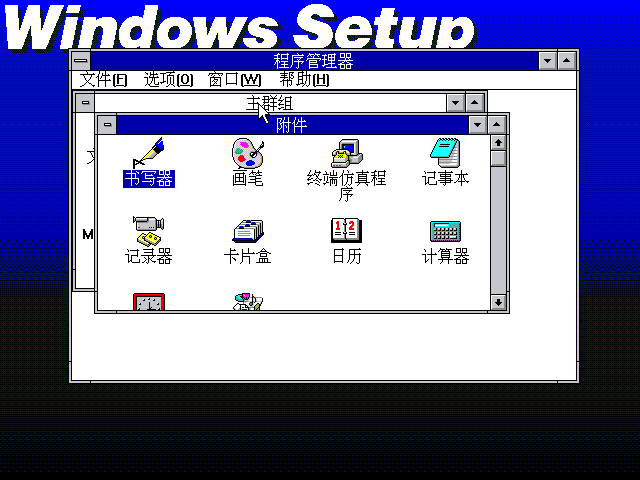
Here "windows" doesn't mean Microsoft Windows. It means any windows in any operating system, that is, any window-like objects you see on the screen of the computer monitor.
We can easily find out the common parts that exist in all window-based operating systems. They all need to provide access to resources, and at the same moment keep programs share the resources. Resources to an operating system are the CPU, memory and I/O devices; in addition, a window-based operating system takes charge of resources of a window system: windows and events.
Since Windows 95, Microsoft Windows series are window-based operating systems running on PCs. Microsoft Windows 3.0 is not a real operating system. It runs on MS-DOS. Of course you can think of it as an operating system, because only from the surface you cannot decide whether it is a real operating system or not. In fact, if Microsoft had distributed MS-DOS together with Windows 3.0, Windows 3.0 would certainly be an operating system.
Windows 3.0 breaks many limitations of MS-DOS, although it runs on MS-DOS. For example, MS-DOS limits programs to a largest memory block of 640KB. Windows 3.0 broke it. MS-DOS doesn't provide sharing of information between programs. Windows 3.0 provides it. MS-DOS doesn't provide multi-tasking. Windows 3.0 supports it. So I say Windows 3.0 broke many limitations of MS-DOS.
You can start and end a program easily in Windows, also you can communicate with it more easily. You can run several tasks at one time, also you can switch between them with ease. Information can be shared easily in Windows through copy-paste operations with the help of Windows clipboard. You can manage your documents through a window-based program, so it is more convenient. Windows support OLE (object linking and embedding), which means you will be able to insert objects of a program into a document of another program.
In Windows, the screen of the computer appears to be a desktop. The desktop displays running tasks in the form of windows. You can communicate to your programs through windows.
You can resize and move the windows as you like to to make your work more convenient. For example, you can resize the windows of two programs each showing a report in order to view both reports together.
For detailed information about Microsoft Windows, please see the following topics:
